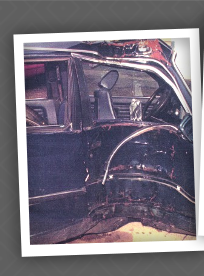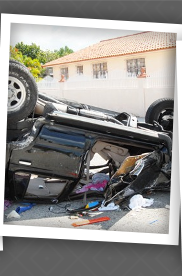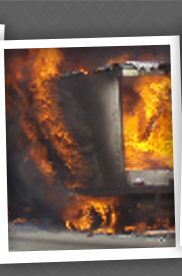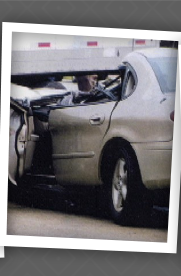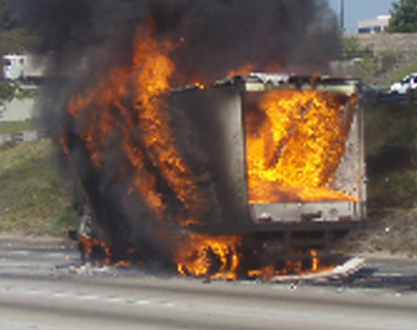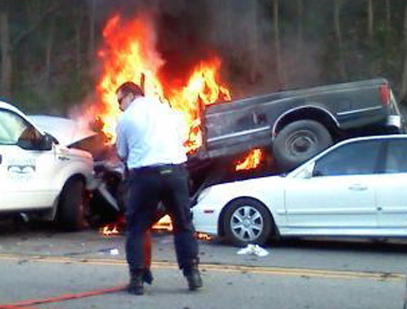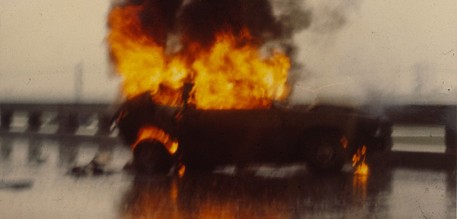|
Fuel Tank Fires - and Engine Compartment Fires Fuel tanks that are located vulnerably behind the rear axle, or outside the frame rails, are subject to crushing, rupturing, puncture, and filler tube separation. Unsafe vehicles with their fuel tank near the rear bumper include the Ford Mustang (1964 thru 2004), the notorious Ford Pinto, Ford Crown Victoria, Lincoln TownCar, Jeep Cherokee and Jeep Liberty. GM-Chevy pickups from 1973 thru 1987 had their fuel tanks vulnerably exposed at the sides of the vehicle and outboard of the main frame rails. Safer designs are protected forward of the rear axle and inboard of the frame rails, with break-away filler tubes and anti-surge valves, and anti-puncture shields. In frontal collisions, there are many engine compartment fires due to rupturing or separation of high-pressure fuel lines, among other causes. Often, the lack of a simple, low-cost fuel shut-off inertia switch unsafely allows the fuel pump to keep gasoline flowing to further exacerbate the fuel-fed fire that quickly engulfs the vehicle.
Shown below is a Ford Pinto on fire in a Florida accident. The Pinto's fuel tank was vulnerably located near the rear bumper, where it was easily crushed and ruptured in rear impact accidents. Also, the filler tube easily pulled out. These fuel tank system failures were known to Ford in their own "confidential" crash tests, but the public was unaware until a series of fiery accidents occurred. Many other vehicles had a similarly unsafe location for ther fuel tank... very close to the rear bumper... but it took about 30 years before the automakers adopted the safer forward-of-axle location in most of their vehicles.
|
